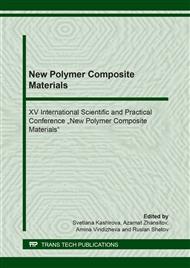p.192
p.197
p.202
p.208
p.214
p.219
p.228
p.233
p.238
Chitosan-Based Porous Materials Biocompatible with Fibroblasts
Abstract:
A novel method to obtain porous three-dimensional chitosan-based matrices has been developed. The structure is characterized by an interconnected system of pores, with controlled diameter by varying the concentration of chitosan and the nature of the solvent. The material is biodegradable, biocompatible, with high adhesion to fibroblasts and promotes its proliferation.
Info:
Periodical:
Pages:
214-218
Citation:
Online since:
August 2019
Authors:
Keywords:
Price:
Сopyright:
© 2019 Trans Tech Publications Ltd. All Rights Reserved
Share:
Citation:


